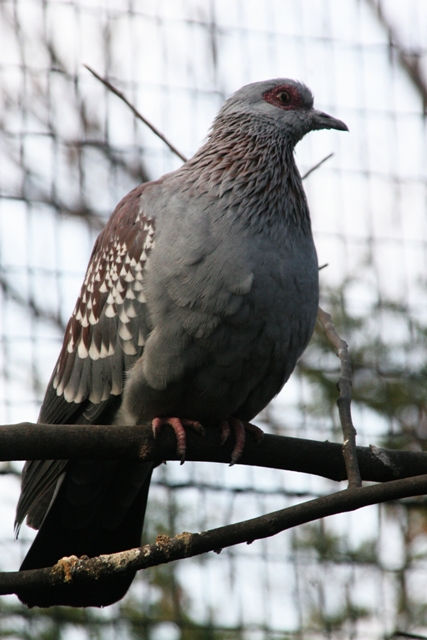|
| Query: Common blue | Result: 709th of 981 | |
Speckled Pigeon (Columba guinea) - Wiki
| Subject: | Speckled Pigeon (Columba guinea) - Wiki
| |

| Resolution: 427x640
File Size: 195655 Bytes
Date: 2005:12:27 13:40:15
Camera: Canon EOS 20D (Canon)
F number: f/13.0
Exposure: 1/400 sec
Focal Length: 271/1
Upload Date: 2007:10:29 15:24:37
|
ERROR : Server Busy(-1105)
ERROR : Server Busy(-1105)
Speckled Pigeon (Columba guinea) - Wiki
Speckled Pigeon
From Wikipedia, the free encyclopedia
[Photo] Speckled Pigeon (Columba guinea) Saint Louis Zoological Park, 12/27/2005. Photograph: Robert Lawton (http://en.wikipedia.org/wiki/User:Rklawton). Copyright (C) 2005 Robert Lawton
Permission is granted to copy, distribute and/or modify this document under the terms of the GNU Free Documentation License, Version 1.2 or any later version published by the Free Software Foundation; with no Invariant Sections, no Front-Cover Texts, and no Back-Cover Texts. A copy of the license is included in the section entitled "GNU Free Documentation License". |
The Speckled Pigeon (Columba guinea) is a pigeon which is a resident breeding bird in much of Africa south of the Sahara. It is a common and widespread species in open habitats over a good deal of its range, although there are sizeable gaps in its distribution.
This species builds a large stick nest in a tree and lays two white eggs. Its flight is quick, with the regular beats and an occasional sharp flick of the wings which are characteristic of pigeons in general.
This is a large pigeon at 41cm in length. Its back and wings are rufous, the latter heavily speckled with white spots. The rest of the upperparts and underparts are blue-grey, and the head is grey with red patches around the eye. The neck is brownish, streaked with white, and the legs are red. The call is a loud doo-doo-doo.
Sexes are similar, but immatures are browner than adults.
The Speckled Pigeon is frequently seen around human habitation and cultivation. Most of its food is vegetable, and it gathers in large numbers where grain or groundnuts are available.
http://en.wikipedia.org/wiki/Speckled_Pigeon
| The text in this page is based on the copyrighted Wikipedia article shown in above URL. It is used under the GNU Free Documentation License. You may redistribute it, verbatim or modified, providing that you comply with the terms of the GFDL. |
|
Comments |
|---|
| | Guest |
|
Scientific Name: Columba guinea Linnaeus, 1758
Common Names:
English – Speckled Pigeon, Rock Pigeon, Guinea Pigeon
French – Pigeon de Guinée
French: Pigeon roussard German: Guineataube Spanish: Paloma de Guinea
Taxonomy: Columba guinea Linnaeus, 1758, Senegal. |
^o^
Animal Pictures Archive for smart phones
^o^
|
|
|

